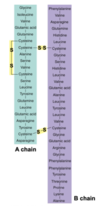SI Flashcards
When does chyme move into the stomach
0-3 hrs after entering the stomach
How long does it take for chyme to move through the SI (6m)
1-6 hours
Role of
- Duodenum
- Jejunum
- Ileum
in absorption
- Digestion and a small amount of absorption
- Digestion and absorption
- Absorption
Conduction rate of the SI
1 cm/min
What is the conduction rate of the SI influenced by
- Enteric nervous system
- Hormones
- Gastrin (increase)
- Cholecystokinin (increase)
- Secretin (increase)
Relationship between structure and SA of the SI

Actual SA of the SI
120-140 m2
> 95% of nutrients are absorbed
Increasing food intake, limited capacity - reserve capacity (when we over-eat)
Structure of SI
ENS regulates digestion, motility and absorption

Gut layer organisation
Gut wall has a layered organisation, with the absorptive cells lining the lumen and neural muscular components below
Blood and lymph vasculature is abundant to transport absorbed nutrients

Function of villi
By projecting into the lumen, the villi increase the SA for absorption of nutrients
Microvilli (brush border) fringe the villi to further increase SA

What does lymph carry
Fat and fat-soluble vitamins
Structure of SI

What is the epithelial mucosa composed of
Absorptive cells
Secretory cells - enzymes, hormones, fluid (follows secretion of solutes), mucus (for protection)
What do the exocrine cells in the pancreas do
Play a central role in the production of digestive enzymes
(beta cells - islets of langerhans - secrete insulin into circulation)

Where are digestive secretions from the liver and pancreas delivered into
Into the duodenum through the SPHINCTER OF ODDI

- Acini secrete…
- What stimulates acini
- Enzymes
- CCK and ACh

- Ducts secrete…
- What are the ducts stimulated by
- Bicarbonate
- Secretin

What does CCK do
Makes gallbladder contract
CCK mediates gastric emptying rate in response to fat
Reduces appetite and induces nausea
What protects the pancreas from autodigestion
Kazal inhibitor secreted from pancreas to protect it
Bicarbonate secretion in pancreas or intestine
(Position of transporters is reversed in the stomach)
- BASOLATERAL - Na+ will be used to export H+ out of the cell into circulation
- H+ came from carbonic anhydrase that broke down from CO2 and H2O
- Bicarbonate is exchanged for chloride on the luminal side of pancreas - Cl- can flow back in
- Chloride is circulating across
- NET EFFECT: Bicarbonate into lumen - sodium goes between cells and leaks into lumen, dragging water by osmotic load

What does the stomach have (in relation to HCO3- secretion)
Stomach has defensive mucus layer filled with continuous secretion of bicarbonate, so the mucus layer in the stomach protects the gastric wall from being attacked by acid
We must neutralise acidic chyme to prevent intestinal ulcers
Also neutral pH for enzymes to act
What is secreted from the pancreas
How is it secreted
- NaHCO3- solution
- Cl-/HCO3- antiport co-transporter on apical membrane
- HCO3- enters pancreatic duct
- Na+ secreted through cell junctions
How else is NaHCO3 secreted, apart from the pancreas
By liver (bile)
Response of an increase in acid from the stomach
- Sensors in duodenum
- Secretin conc will rise
- Stimulate pancreas to release bicarbonate, bicarbonate will flow into SI, neutralise acid and reduce the stimulus on secreting cells
- -ve feedback loop controls HCO3-
- Sensor picks up pH of SI
- Acid is neutralised, SI protected

























